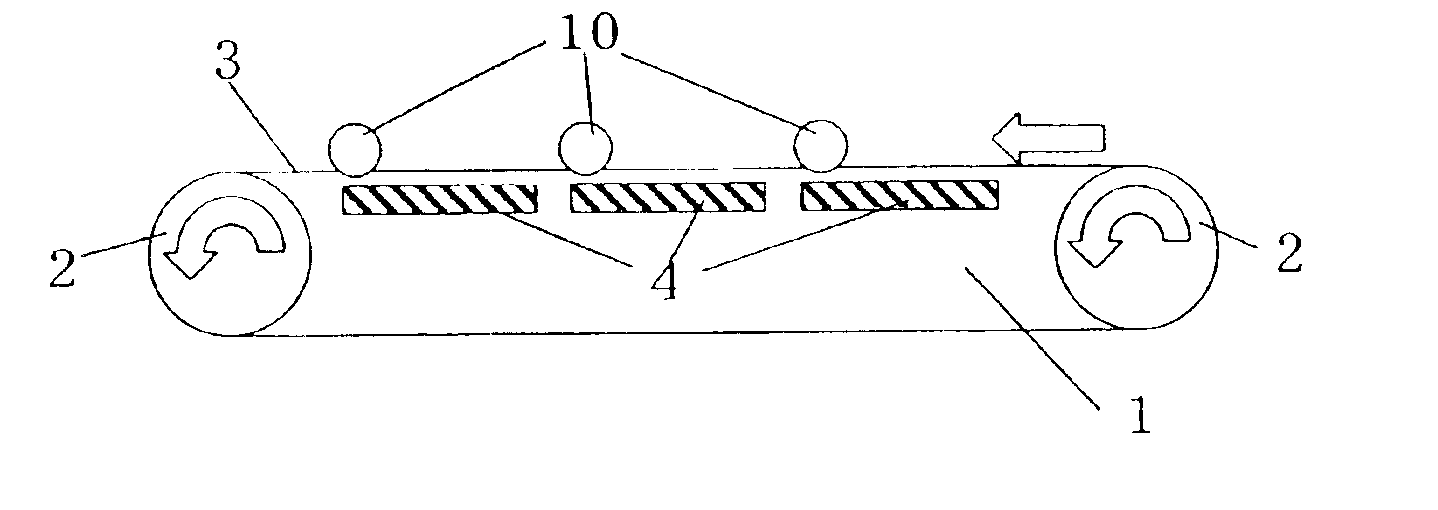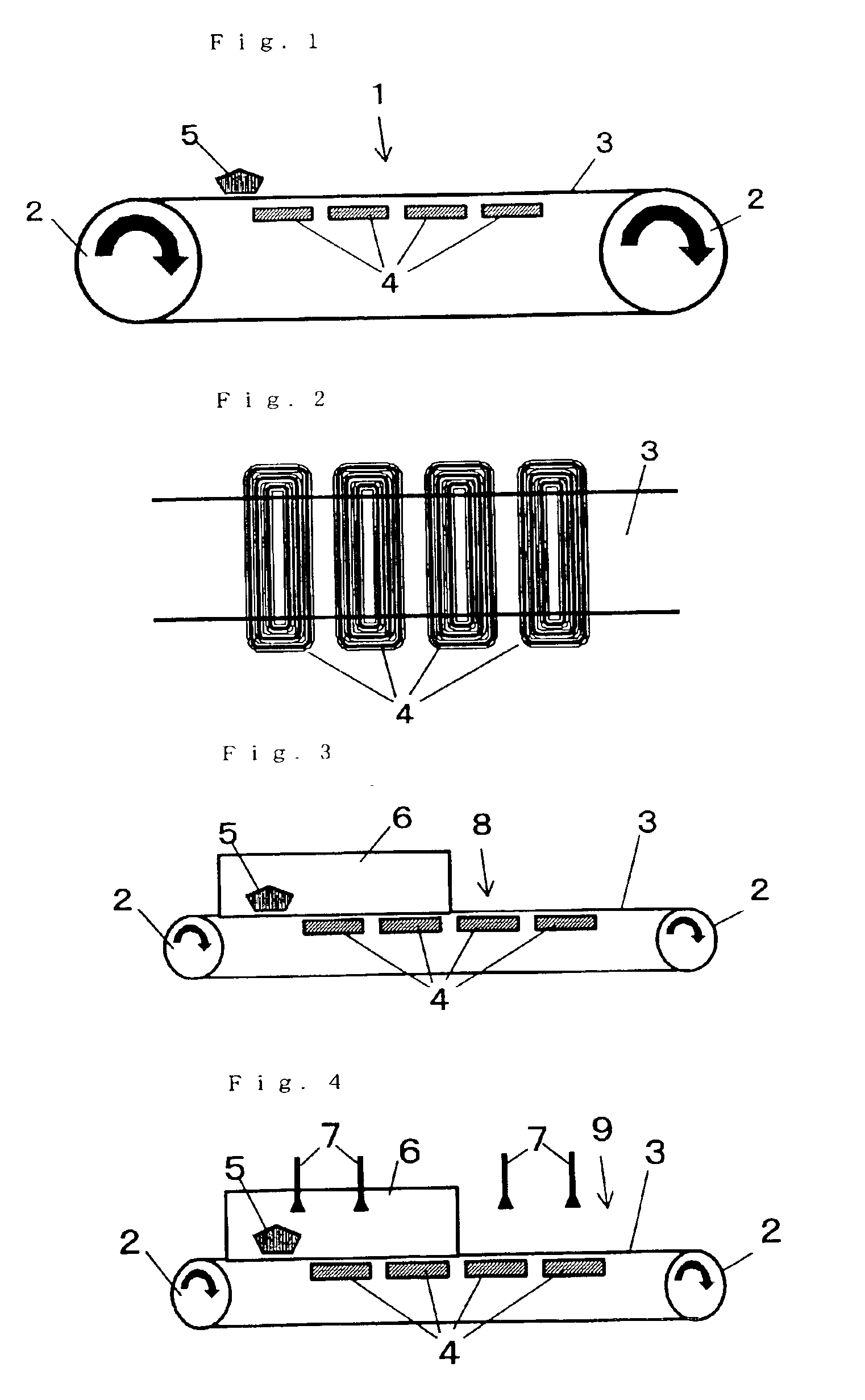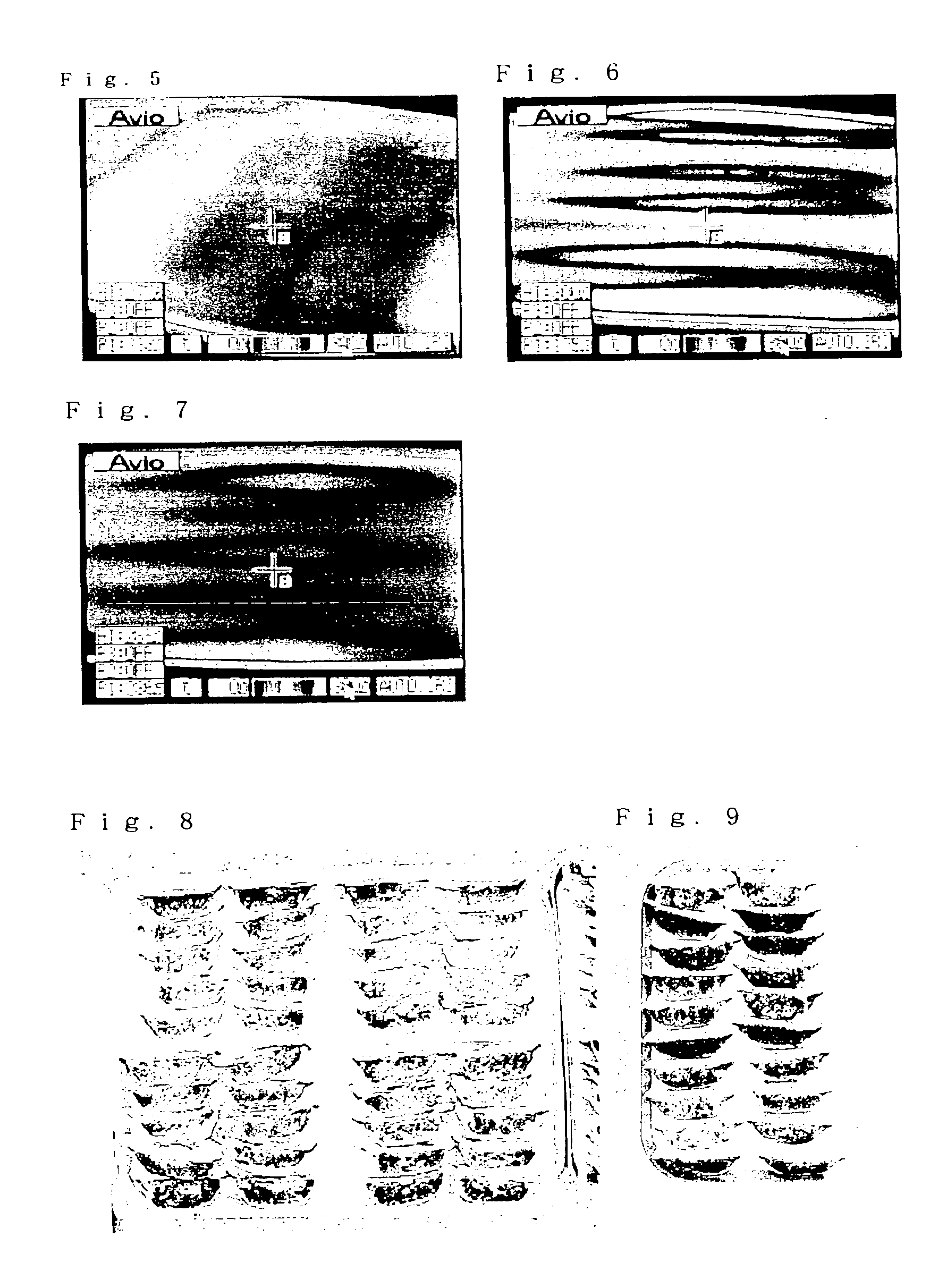Heating apparatus and heating stabilization device in thereof
a technology of stabilizing device and heating apparatus, which is applied in the direction of electric/magnetic/electromagnetic heating, electrographic process, instruments, etc., can solve the problems of low energy efficiency, difficult to realize the pattern, and concerns regarding safety, so as to prevent excessive frying and solidification of food, prevent excessive frying and degrade in quality
- Summary
- Abstract
- Description
- Claims
- Application Information
AI Technical Summary
Benefits of technology
Problems solved by technology
Method used
Image
Examples
example 1
A temperature distribution of the top surface of the top part of a rotating steel belt was observed with a “Thermography” instrument (manufactured by Nippon Avionics Co., Ltd.) for a case in which a set of two elliptical coils having a relatively large major-axis-to-minor axis ratio was disposed such that the longitudinal directions of the respective coils were perpendicular to the belt moving direction as disclosed in the present invention, a case (Comparative Example 1) in which a set of three elliptical coils having a relatively large major-axis-to-minor axis ratio was disposed in such a manner that the longitudinal directions of the respective coils were parallel with the belt moving direction, and a case (Comparative Example 2) in which coils were arranged in the same manner as in Comparative Example 1 and were swung by an air cylinder.
In Comparative Example 1 (see FIG. 6), temperature unevenness was evident in the width direction of the steel belt. Temperature unevenness in th...
example 2
A carbon hardened steel belt of 1.2 mm in thickness, 1 m in width, and 60 m in length was formed into an endless belt, which was wound on two pulleys that are 800 mm in both diameter and width, to form a steel belt conveyer having a total length of about 30 m. Ten (10) induction heating coils, each capable of being housed in an 1 m square unit, were provided, and were arranged adjacent to an 11 m long, downstream portion of the top part of the steel belt under the bottom surface of the top part of the steel belt (distance: 10 mm). The coils were separated from each other by about 100 mm. Each coil unit was connected to an induction heating inverter of 30 kW. A temperature sensor was disposed under the bottom surface of a central portion, in the width direction, of the top part of the steel belt at a position 50 mm downstream from the coil unit. Each temperature sensor was disposed to be kept in contact with the bottom surface of the top part of the steel belt by a spring. A measurem...
PUM
 Login to View More
Login to View More Abstract
Description
Claims
Application Information
 Login to View More
Login to View More - R&D
- Intellectual Property
- Life Sciences
- Materials
- Tech Scout
- Unparalleled Data Quality
- Higher Quality Content
- 60% Fewer Hallucinations
Browse by: Latest US Patents, China's latest patents, Technical Efficacy Thesaurus, Application Domain, Technology Topic, Popular Technical Reports.
© 2025 PatSnap. All rights reserved.Legal|Privacy policy|Modern Slavery Act Transparency Statement|Sitemap|About US| Contact US: help@patsnap.com



